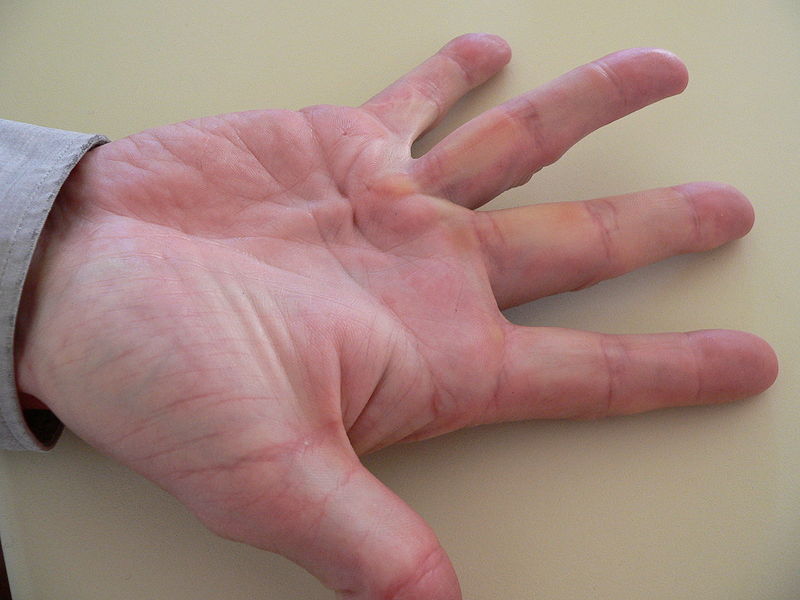DUPUYTREN’S CONTRACTURE
TRIGGER FINGERS
Several years back, I successfully treated a sweet-as-can-be little old lady from the Houston area. She has since gone on to be with the Lord, but the reason she came to me was because she could no longer play the organ at her small, country church — something she had done for sixty some odd years. The connective tissue (Palmar Fascia) of the palms of her hands and fingers had thickened and drawn up to the point where she could no longer straighten them out. She had something called Dupuytren’s Contracture.
In Dupuytren’s contracture, the Palmar Fascia that lies between the skin and muscles of the hand becomes abnormally thickened. This can cause the fingers to curl up (Trigger Fingers) and can result in an inability to use the hand. The pinky and ring fingers are most commonly affected. The main function of the Palmar Fascia is to increase grip of the hand; thus, over time. As you might imagine, with Dupuytren’s Contracture, a person can lose their ability to grip objects.
WARNING: DO NOT IGNORE DUPUYTREN’S CONTRACTURE! Interestingly enough, most people do not have hand pain with this condition. Although there are definite genetic factors associated with who gets this condition, it is likely associated with hard or repetitive work and possibly trauma as well. If you see me before it gets bad, it is usually easy to keep the hand functioning without surgery.
Dupuytren’s Contracture often starts with nodules in the palm of the hand, and frequently extends to the Tendons of the finger. As the Palmar Fascia becomes abnormally thickened, there is a change in the type of collagen. Like other areas of Fascia, the Palmar Fascia is made of Type I Collagen. With Dupuytren’s Contracture, the Type I Collagen becomes Type III Collagen. This is problematic because Type III collagen is much thicker than Type I Collagen. The contracture sets in slowly and rarely causes pain. In order to avoid surgery, try Tissue Remodeling and appropriate nutritional therapies early in the game. Once you have a positive Table Top Test (you can no longer lay the hand flat on a table), treatment becomes more difficult.
It is important to be aware that although surgery is a common option for treatment of this problem, It is not always the best option. Most recently, a team of doctors published a study on recurrence of Dupuytren’s Contracture after treatment in a 2006 issue of the American Journal of Hand Surgery. Their conclusions? They determined that despite treatment (surgery), there is a, “high rate of recurrence“. Here at Schierling Chiropractic, LLC, we will use SCAR TISSUE REMODELING THERAPY along with nutritional supplements and possibly LASER THERAPY. You will know quickly if it is going to help, or if you might require a surgical procedure.


